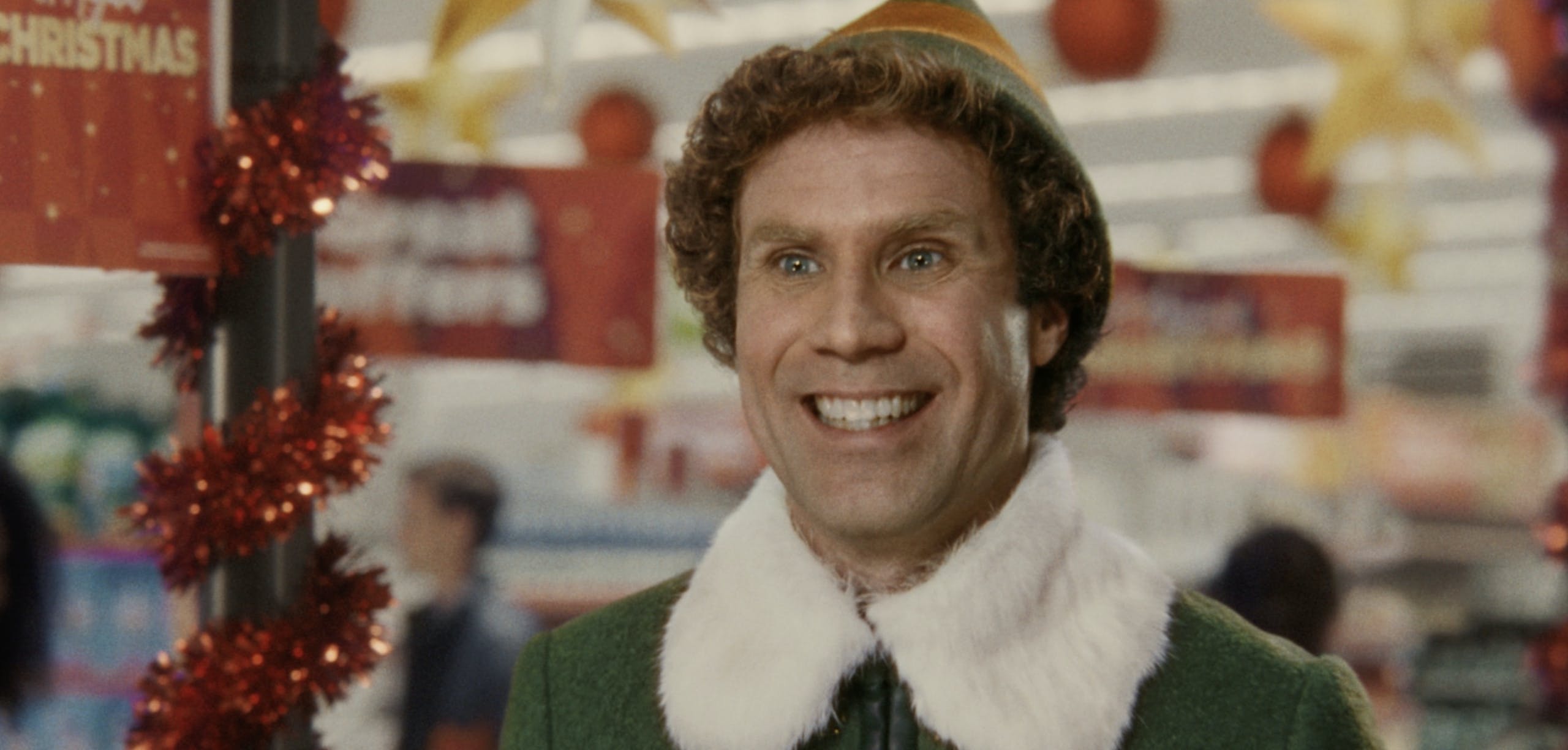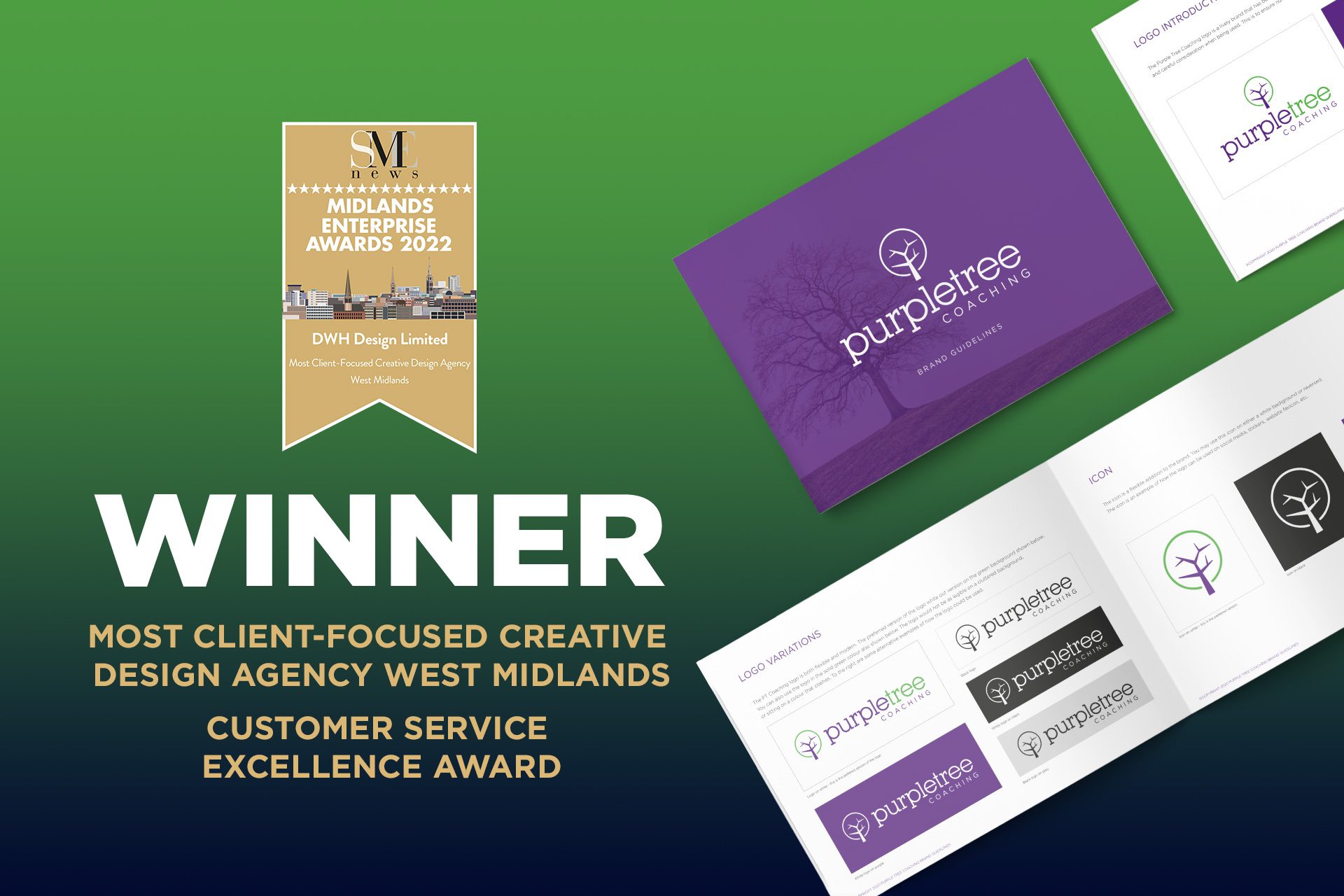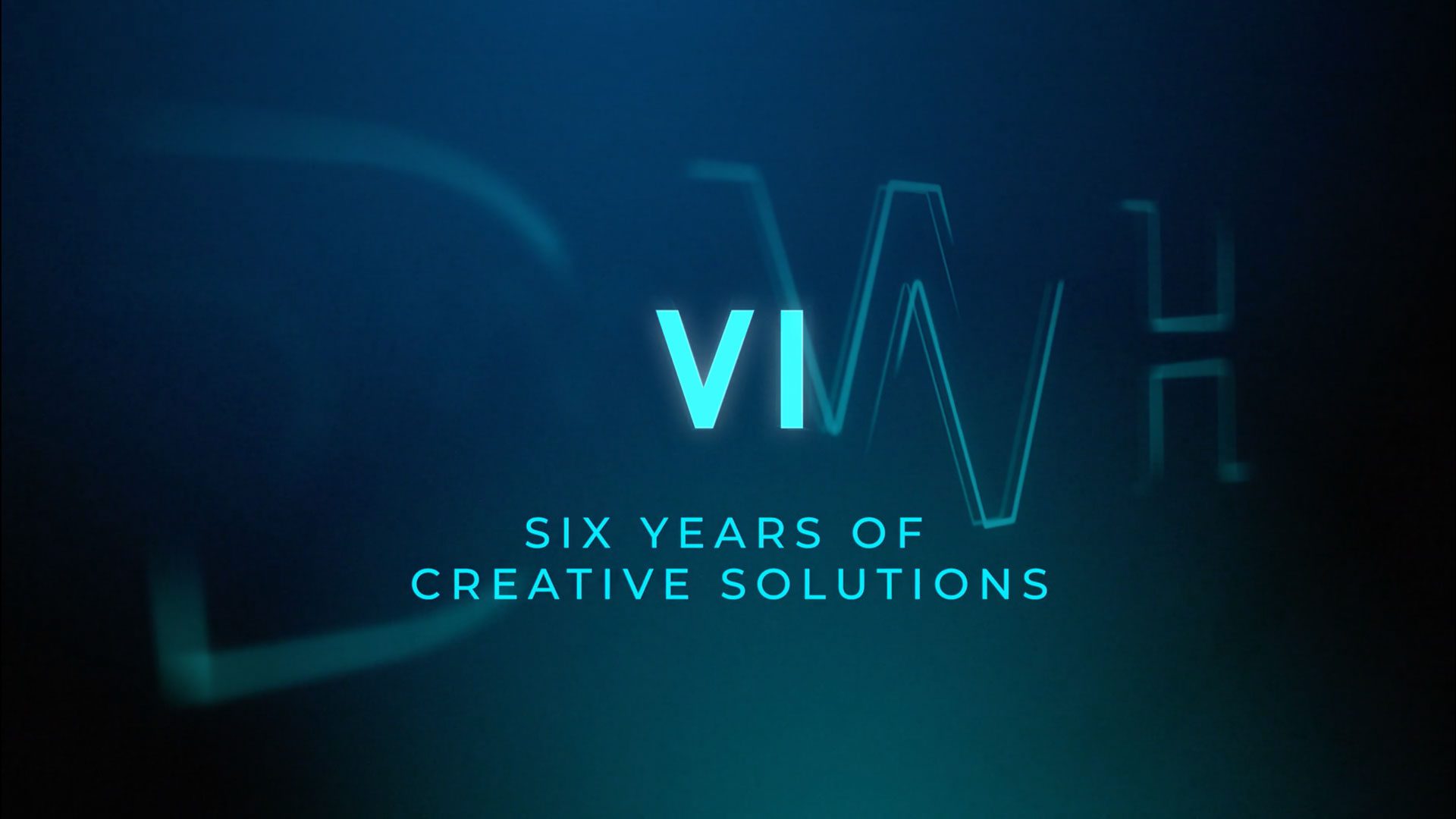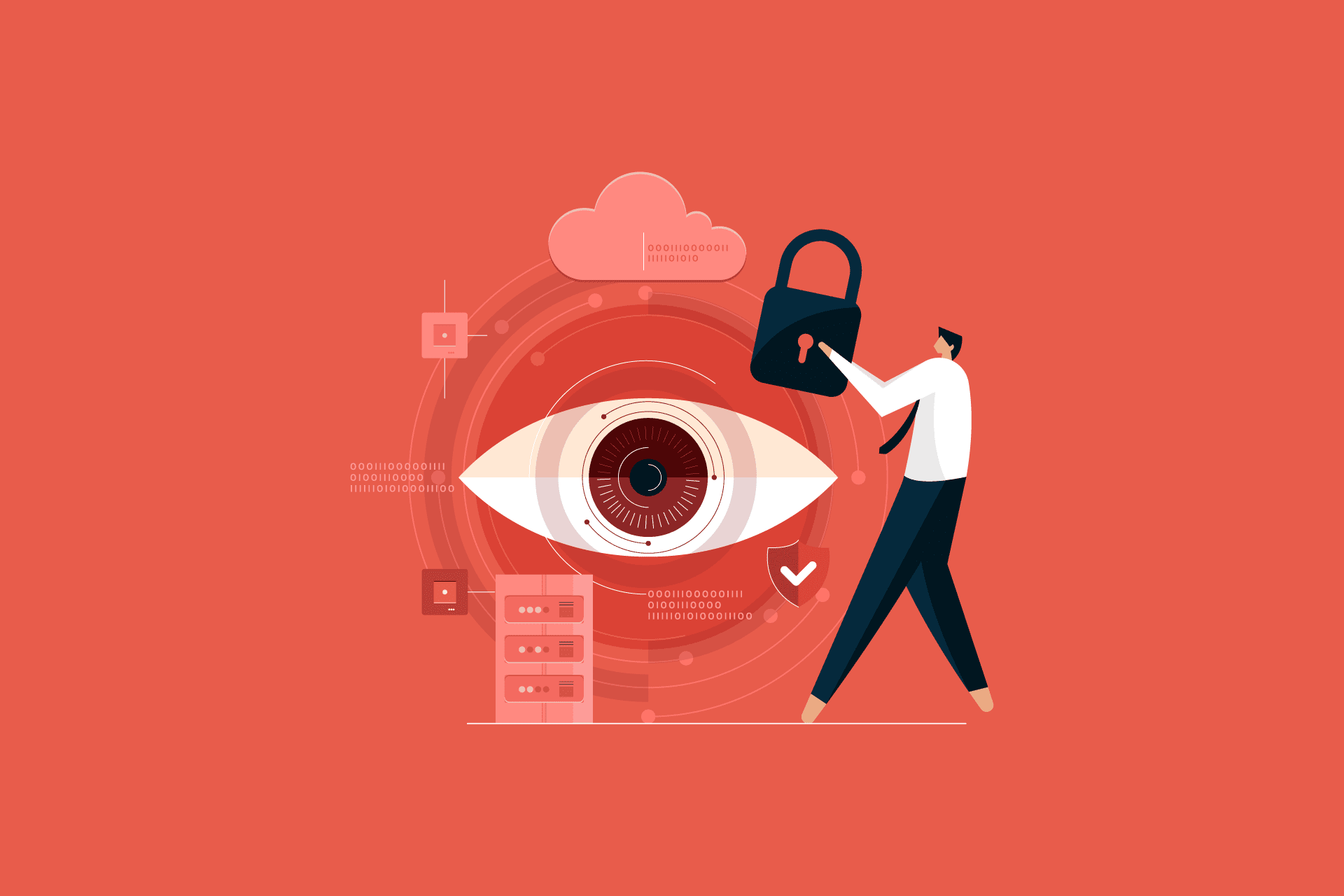Colour as brand: Pantone Color of the Year 2023
Each year, the colour gurus Pantone select their Color of the Year, sending marketing teams, interior designers, fashion bloggers and artists into a frenzy of following the trend. Of course, 2023 is no exception. If you like, you can watch the 30-minute announcement video on Pantone’s website. Or if you don’t fancy that, I’ll be quoting various sentiments about this year’s choice in the article below. So, without further ado, welcome to the Magentaverse.
Each year, the colour gurus Pantone select their Color of the Year, sending marketing teams, interior designers, fashion bloggers and artists into a frenzy of following the trend. Of course, 2023 is no exception. If you like, you can watch the 30-minute announcement video on Pantone’s website. Or if you don’t fancy that, I’ll be quoting various sentiments about this year’s choice in the article below. So, without further ado, welcome to the Magentaverse.
Viva Magenta
Pantone chose Viva Magenta 18-1750 as the 2023 Color of the Year, noting that it is “a shade rooted in nature” that is “inspired by the red of cochineal”.
In case you didn’t know, this is an insect that is known for its bright red colour. This is where the pigment carmine comes from. It’s been used for thousands of years as a dye and is still used for fabrics and cosmetics today, as well food colouring. So those tasty red sweets you’ve been enjoying and your favourite red lipstick… you might want to check the label for crushed up bugs.
While Pantone is drawing upon natural and historical connections to their latest Color of the Year, it does feel like a slightly odd choice in 2023, where sustainability, plant-based products and environmentally friendly ethics are stronger than ever. Admittedly, it’s not as tone deaf as 2019’s Living Coral, which prompted Australian design studio Jack and Huei to suggest Bleached Coral as the 2020 Color of the Year.
You might be thinking that it’s not really their place to deliver commentary on the human impact on our environment and it’s unfair to expect that of them, but the way that Pantone talks about colour shows that we connect with colour on a deeper level than simply liking or disliking the shade, and this makes it a strong vessel for messaging.

Colour as action
One thing that I find particularly fascinating about Pantone’s descriptions of Viva Magenta is their use of verbs, creating a sense of motion that is inherent to the colour. They describe Viva Magenta as “a pulsating color” that “vibrates with vim and vigor” and is “a new animated red”.
It’s interesting to consider the perceived motion of certain colours and how this can be used to strengthen brand messaging. As well as static applications such a logo design, these concepts could be incorporated into branded animations for even more engaging storytelling.

Colour as personality
Viva Magenta is described by Pantone as being “full of wit” and having a “verve for life” and “rebellious spirit”. I’m not sure how a colour can be witty, but the more I thought about it, the more there seems to be a certain amount of sense to the claim.
Colour theory has long been an integral part of creating a brand, and it’s true that we ascribe certain traits to different colours. Green is fresh, blue is cool, red is exciting… But these don’t necessarily translate to distinct personalities. What Pantone has done is taken the traditional expectations of colour theory and supercharged them, magnifying simple concepts like “exciting” into having a “rebellious spirit”, which is easier for people to connect with on a personal level.

Colour as promise
Leatrice Eiseman, Executive Director of Pantone Color Institute tells us that Viva Magenta “galvanizes our spirit” and helps us to “build our inner strength”. These are bold claims to attach to something as intangible as colour, but there’s something reassuring about hearing them that makes us want to believe, and we may even end up manifesting these qualities simply because we have faith in the promise.
Much like the extension of colour theory into human-like traits above, this type of description helps us to build a personal connection with the colour itself, almost entering into a partnership with it. In order for Viva Magenta to build your inner strength, you have to be open and receptive to the concept, in much the same way as an audience interacts with a brand’s product claims.

Colour as brand
The way that Pantone talks about colour creates a unique mythology that essentially translates to an entire brand identity for a single specific shade. In doing so, Pantone has created an identity that is exciting, has fascinating roots in human history and has the entire creative sector talking about it… even though it’s just a pretty shade of pinkish red.
We can all take lessons from how Pantone treats its colours; these are the qualities we should be attributing to our own brands. Everything your brand puts out should be another chapter in its mythology, demonstrating the unique actions, personality and promises that consumers can expect. If Pantone can create an entire character for a single colour, there are almost endless possibilities for even the tiniest of brands to engage with an audience on a deeper level.

Looking to add a little colour to your brand?
If your brand identity needs something new and exciting for 2023, the experts at DWH are on hand to offer strategic insights to help you achieve your goals. We’ll work hard create a unique personality that entices your audience – and that doesn’t mean just swapping out your hero colour for Viva Magenta. To speak to us about your brand, get in touch online or give us a call on 024 7518 5490.
8 Christmas ad clichés, as told by 2022
It’s that time of year again! Just like Santa’s elves in the workshop, marketing departments around the world have been busy working away on something spectacular. Each Christmas advert has been carefully wrapped and placed under the tree, ready to be opened and enjoyed. For this year’s roundup, we’re going to take a look at some of the classic Christmas ad clichés, and how 2022’s contributions stack up.
1. The cute character
From the adorable John Lewis penguin to Aldi’s Kevin the Carrot, cute characters are a staple in the world of Christmas ads. As well as helping to boost the warm and fuzzy feelings, they’re also a great way to flog a bit of extra merchandise. This year, we’ve seen the return of a few old favourites, as well as some new additions to the gang.
Lidl
Rather than the usual emotional tales we’re used to, Lidl’s 2022 Christmas advert tells the story of Lidl Bear and his accidental rise to fame, forsaking the little girl who loves him and gifted him the tiny Christmas jumper that made him famous. It’s a lighthearted commentary on how fame can change a person (or a bear) and make them forget about the important things in life. Of course, Lidl Bear comes home on Christmas Day and everyone is happy.
In a refreshing change to the norm, Lidl has chosen not to merchandise the character, despite being inundated by requests from customers. Instead, the supermarket chain is encouraging customers to donate to Lidl Bear’s Toy Bank in their local stores, helping to ensure that every child has something to look forward to this Christmas.
2. The unexpected cover version
The Song is one of the quintessential types of Christmas ads, with plenty of festive favourites, big-budget performances and irritatingly catchy parodies making an appearance each season. However, it’s starting to feel like the Christmas cover version trope is morphing from sentimental reworkings of well-loved songs to straight-up tonal whiplash.
John Lewis
Let me start by saying that this advert is very sweet, featuring a father’s painstaking efforts (emphasis on ‘pain’) to learn how to skateboard in preparation for the arrival of his foster daughter, who is a keen skater. The unexpected part is the baritone lounge band cover of Blink 182’s 1999 pop-punk classic All the Small Things.
While intended to echo the importance of seemingly small gestures, the song choice does feel like a bit of a tonal mismatch. Particularly once you learn that this version, released by Postmodern Jukebox in 2017, features a clown named Puddles Pity Party on vocals and is titled “All The Small Things (Blink 182 Sad Clown Cover)”. I highly recommend watching the music video below so you can really appreciate the jarring juxtaposition of a sad clown crooning late-’90s pop punk with the heartwarming story of a loving foster family.
Sainsbury’s
A special mention for the unexpected cover cliché also goes to this year’s ad from Sainsbury’s, which features, inexplicably, a Renaissance version of Teenage Dirtbag by Wheatus on a flute. Your guess is as good as mine on that one.
3. The pop culture reference
A parody song or pop culture reference can be a quick and easy way to ignite a spark of recognition in the viewer that makes them connect with your brand on a more personal level. It’s also a great option if your creative team has run out of ideas and wants to take it easy by rehashing an existing story…
Aldi
Kevin the Carrot returns once again, this time in the form of a Home Alone-style Christmas caper. Now, I’m sure it’s not actually a case of laziness and more an appreciation of classic Christmas stories, but considering Aldi’s ad last Christmas was a carrot-based retelling of A Christmas Carol, I’m starting to question their dedication. And while 2021’s offering was packed with silly puns and a fun Caterpillargate Easter egg, this year we got poor poetry scansion and a dick joke… which feels pretty low-effort to me.
4. The Christmas party
Whether with friends, family or Freddie from Finance, the Christmas party is one of the staples of the season. It’s something we look forward to, giving us the chance to let our hair down, dress up in something sparkly and drink an amount of alcohol that we will politely refer to as ‘festive’. The glitz and glam offer beautiful visuals, so it’s naturally a popular topic for Christmas ads.
Tesco
This year, the Christmas party looks a little different, with Tesco giving their festive offering a political twist by spreading the Christmas Party’s campaign message. With policies including more pigs in more blankets for more people, and a referendum to see if Love, Actually is the greatest Christmas film, I’m not sure I’d trust them with repairing the economy, but it’s a clever angle for an ad.
5. The gift that’s more than a gift
The consumerism of Christmas can get a little too much, and there’s a lot of unnecessary waste at this time of year. Many brands therefore choose to encourage customers to spend their hard-earned money on something with real meaning to the recipient, rather than just buying them ‘something to open’ that will end up at a charity shop, or regifted in 12 months’ time.
M&S
While M&S released a Christmas ad specifically for their food range, they’ve also created a campaign to highlight their festive charitable donation. It’s a great twist on the ‘gift that’s more than a gift’ trope, which we saw represented well last year by Etsy’s Christmas campaign, literally titled Give More Than A Gift.
This Christmas, M&S is donating £1 million to The Neighbourly Foundation. This means that any gifts you buy from M&S support community causes near you, so you don’t have to choose between buying your wife the sparkly shoes she wants and helping a local school to build a new football pitch.
6. The real meaning of Christmas
Of course, Christmas is about more than parties and presents. While for many it’s an important religious festival, it’s also a time for families to come together, and might be the only time of year that some people see each other. Celebrating the small things that bring us joy, doing good deeds and generally spreading festive cheer is therefore a key element during the Christmas ad season.
Amazon
In Amazon’s 2022 Christmas ad, we see a father initially frustrated by his daughter’s love for a snow globe, which she carries everywhere with her. Eventually, he realises how much joy this small item brings her, and chooses to embrace it, using a paper shredder delivered by Amazon to create a life-size snow globe in the greenhouse.
One thing that I like about this ad, which is very similar to Amazon’s 2020 Christmas ad, is that the ‘buy things from my company’ angle is fairly small. While they could have chosen to show the father purchasing hundreds of pounds’ worth of goods from Amazon to make his daughter’s Christmas memorable, he borrows most of the items for the snow globe experience from friends and neighbours. This adds a lovely community feel to the marketing message from a $975-billion global conglomerate with a penchant for unethical business practices and violating workers’ rights.
7. The “REAL” meaning of Christmas
Let’s face it. Christmas is all about the food. Whether you’re carving a turkey or plating up a nut roast, we’re only here for the food (and the booze) if we’re really being honest. Understandably, the main event is a huge focus of Christmas ads every year, particularly for supermarkets and food retailers.
Sainsbury’s
The choice to set this story in some kind of Renaissance fantasy land is a bit of an odd one, but it’s a choice that ad execs at Sainsbury’s made nonetheless. We see a line of servants bringing samples of exquisite Christmas fare to be taste tested by the Countess, and she’s very pleased by what her loyal subjects have brought her… for the most part.
Apparently the Countess hates Christmas pudding, and orders something else to be made instead. Roll ye olde R&D montage, as the chef toils to create something more to her taste (accompanied by the aforementioned inexplicable rendition of Teenage Dirtbag). The final reveal comes and it’s… a Christmas pudding?! What insolence is this? But of course it’s a fancy caramelised biscuit one, so the Countess is happy. Christmas is saved, I guess? Never mind the fact that other people in attendance might want a bit of classic Christmas pudding. As long as whoever’s in charge has what they want then Christmas is a success.
Waitrose
Waitrose has also focused on festive fare this year, although the emphasis is less on the gluttonous reverie of a Christmas feast, and more on appreciating the hard work that makes it possible.
The ad celebrates the care and dedication that goes on behind the scenes at farms, orchards and development kitchens throughout the year to make sure every ingredient in your family’s Christmas dinner is the best it can be. From expressing an appreciation for the year-long efforts that culminate in a single meal to the selfless sharing of pigs in blankets in the closing moments, this ad fills you up with warm, fuzzy feelings instead of stodgy Christmas pud.
8. The elaborate opus
Each year, a subset of marketing execs choose to put on their directors’ hats and try to outdo each other with a memorable mini movie. One of the all-time classic Christmas ads is the 2014 offering from Sainsbury’s. Just shy of 4 minutes long, this epic ad was inspired by real events on Christmas Day 1914 and produced in partnership with The Royal British Legion, setting an impressive benchmark for other brands to follow.
Asda
This year, Asda has pulled off something truly impressive by cleverly splicing footage of Will Ferrell as Buddy the Elf into their Christmas ad. We see Buddy applying to become a Christmas helper at the store and, while he has a little trouble fitting in, Asda’s editing team had no issues seamlessly integrating moments from the classic Christmas movie into the familiar setting of the British supermarket.
It’s really well done, both in terms of the visual editing and the scenario they’ve crafted, culminating in a great little ad that probably took a lot of time, effort and budget to get just right. There’s no emotional message and they don’t really try to flog their products; instead, we just get to enjoy a fun and creative project that shows off the imaginative and technical capabilities of the team behind it.
Let’s wrap up
These are just some of the Christmas ad clichés that brands return to each festive season, and a small selection of the many adverts released this year. As soon as I hit ‘publish’ on this post, I’m sure I’ll think of more tropes to talk about. There’s always next year.
Using video to tell a story
We recently took a look at the importance of animation in branding, and one of the benefits we highlighted was the ability of motion to tell a story at a glance. It’s quicker to absorb a message through animation than to read even a short sentence. While animation is a great option for brand storytelling, it isn’t always the right call to get your message across. In this article, we’re going to look at a few different types of video content you could be harnessing for your brand, and how they can help you to share your story. Let’s get into it. Lights, camera, action!
We recently took a look at the importance of animation in branding, and one of the benefits we highlighted was the ability of motion to tell a story at a glance. It’s quicker to absorb a message through animation than to read even a short sentence. While animation is a great option for brand storytelling, it isn’t always the right call to get your message across. In this article, we’re going to look at a few different types of video content you could be harnessing for your brand, and how they can help you to share your story. Let’s get into it.Lights, camera, action!
Full-production video
The biggest, fanciest and most expensive option for video marketing is a full-production shoot. This presents an amazing opportunity to create a world and tell a story with imagination as your only limit.
However, this large-scale operation requires a big budget, long lead times and a sizeable cast of characters that could include everything from storyboarders and scriptwriters to costume designers and lighting riggers. It’s ideal for big brands and national campaigns, but shouldn’t be undertaken lightly.
Even if you do have the money, brand clout and production team to take on a complex video project, it’s important to make sure there’s enough of a reason behind your video to warrant it. A customer testimonial might seem a little OTT and insincere if it’s filmed like a major motion picture, but it may be more suitable for the launch of an exciting new line of products.
Video interviews
The classic interview format is so popular because it provides a sense of personal insight and believability that more scripted content can lack. It also gives the audience a chance to have their questions answered, showing that you care about their needs and are proactively working to put their minds at ease.
From talking to the owner about the story behind the business to learning about your products and services from real customers, there are lots of ways to present a story through a question-and-answer video.
One of the great benefits of video interviews is that they are more engaging to the viewer than written interviews, helping you to get more eyes on your story. They are also quick, easy and cheap to make, and don’t lose much from a lower production quality; in fact, your audience may find simple, candid videos more trustworthy than a full-scale shoot.
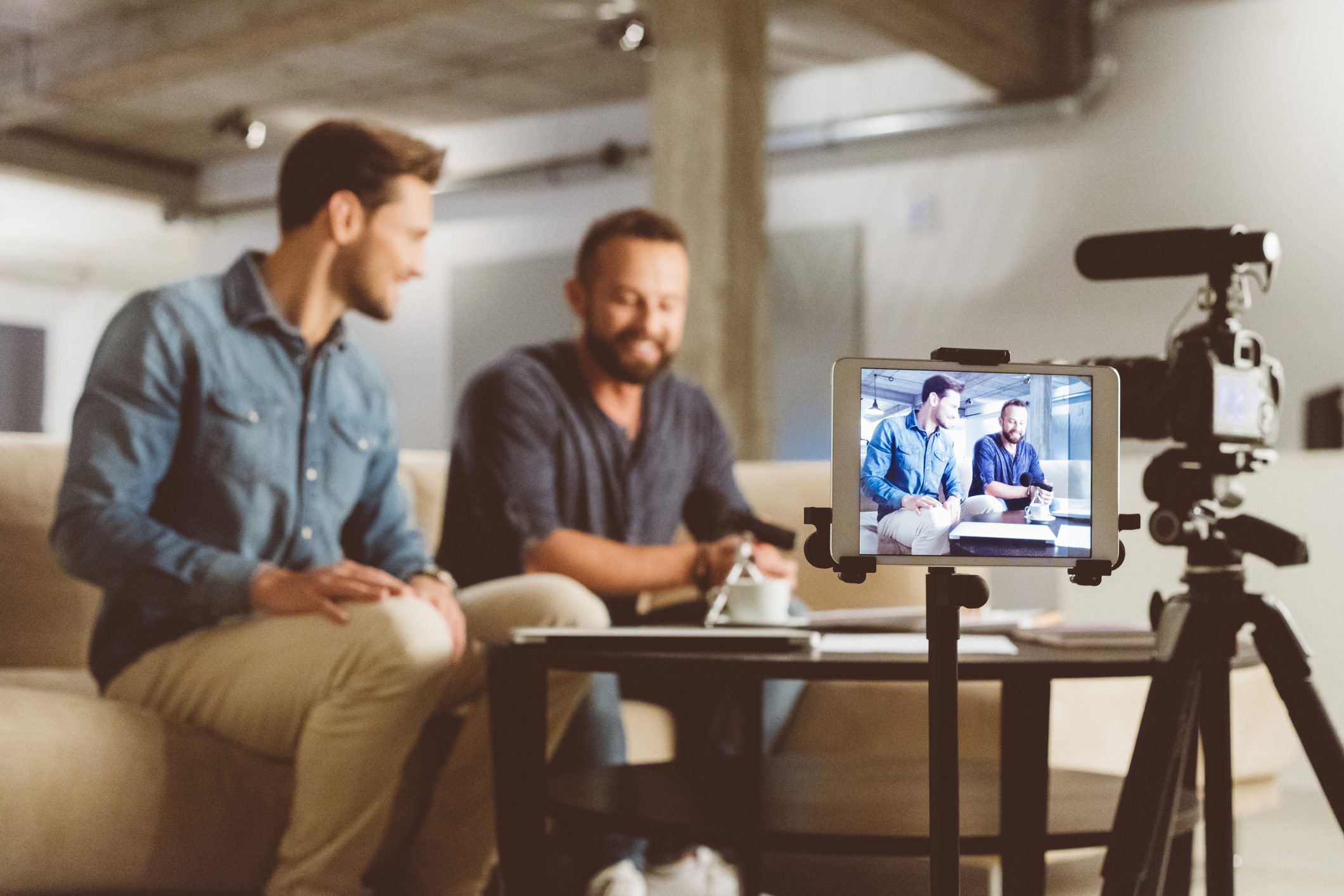
Drone footage
Gone are the days when drones were a complex military device that James Bond might employ on an MI5 mission. With the advancements in technology, basic drones are so lightweight and affordable that they’ve become as commonplace under the tree on Christmas Day as a Furby. Of course, there are also high-tech drones packed with cinema-ready camera kit that can help your brand to capture stunning aerial shots that would make Peter Jackson jealous.
With all video marketing, as well as making sure you’ve got the right equipment for the job, you need a great concept. Drone footage is ideal for showing off spaces, offering breathtaking overhead views of country estates that visitors would never be able to see, or creating walk-through guided tours of indoor and outdoor wedding venues.
You don’t need to purchase your own drone and figure out how to fly it, either. In fact, there are various drone laws regulating their use for both fun and commercial use, including the requirement for a drone operator ID and licence, so it’s best to leave this to the professionals. There are lots of companies out there offering drone photography with skilled pilots able to capture all the amazing shots you need to tell your story.
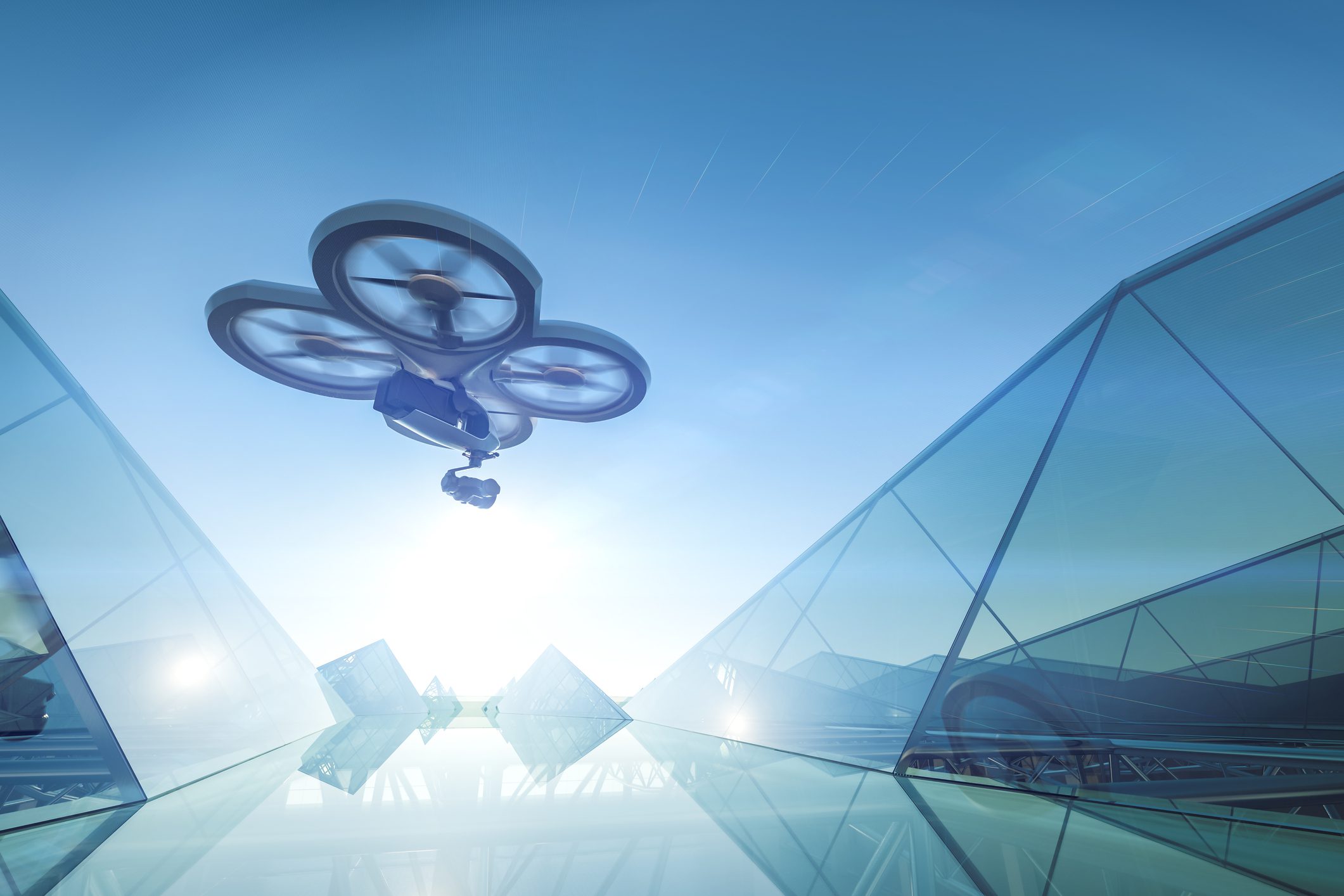
Smartphone video
Social media continues to dominate the attention of internet users, giving brands access to an active, responsive audience. Us Brits are big fans, with 58 million active users, making this a great point of focus for marketing brands in the UK.
Video content offers great engagement stats, and delivers an irresistible hit of dopamine for those who view, like and share. Short-form videos like those found on TikTok and Instagram are a great option to grab attention, build a rapport and tell a story in just a few moments. For video designed to be viewed on a smartphone, it makes sense to use the same piece of tech to film it.
As well as creating video in the right format and dimensions for sharing on mobile devices, this also gives marketers access to video tech round the clock, allowing them to capture moments as and when they occur. This is perfect for behind-the-scenes videos, before-and-after comparisons, or providing a human element to your brand’s operations and helping to create a relationship with your customers.

Ready to embrace video marketing?
If the story-telling possibilities and engagement benefits of video marketing appeal to you but you’re not sure where to start, get in touch with DWH.
As a full-service marketing agency, we can help you to not only plan an effective marketing video, but also to produce and promote it. However complex or straightforward your ideas, we’d love to help you turn them into fully realised videos to engage with your audience and tell your brand story.
Midlands Enterprise Awards 2022
The DWH team is delighted to announce that SME News Midlands Enterprise Awards 2022 has named us the Most Client-Focused Creative Design Agency – West Midlands, as well as giving us their Customer Service Excellence Award.
The DWH team is delighted to announce that SME News Midlands Enterprise Awards 2022 has named us the Most Client-Focused Creative Design Agency – West Midlands, as well as giving us their Customer Service Excellence Award.
SME Awards 2022
Hosted by SME News, the Midlands Enterprise Awards celebrates the efforts of small businesses, who are often overlooked by mainstream awards. Now in its fifth year, the programme features a variety of awards for different sectors, such as finance, family business and IT, as well as awards for the best-of-the-best in specific regions within the UK.
As well as recognising excellence, innovation and dedication, the award aims to introduce readers of SME News to exceptional businesses, fostering collaboration, inspiration and support.
The Midlands Enterprise Awards 2022
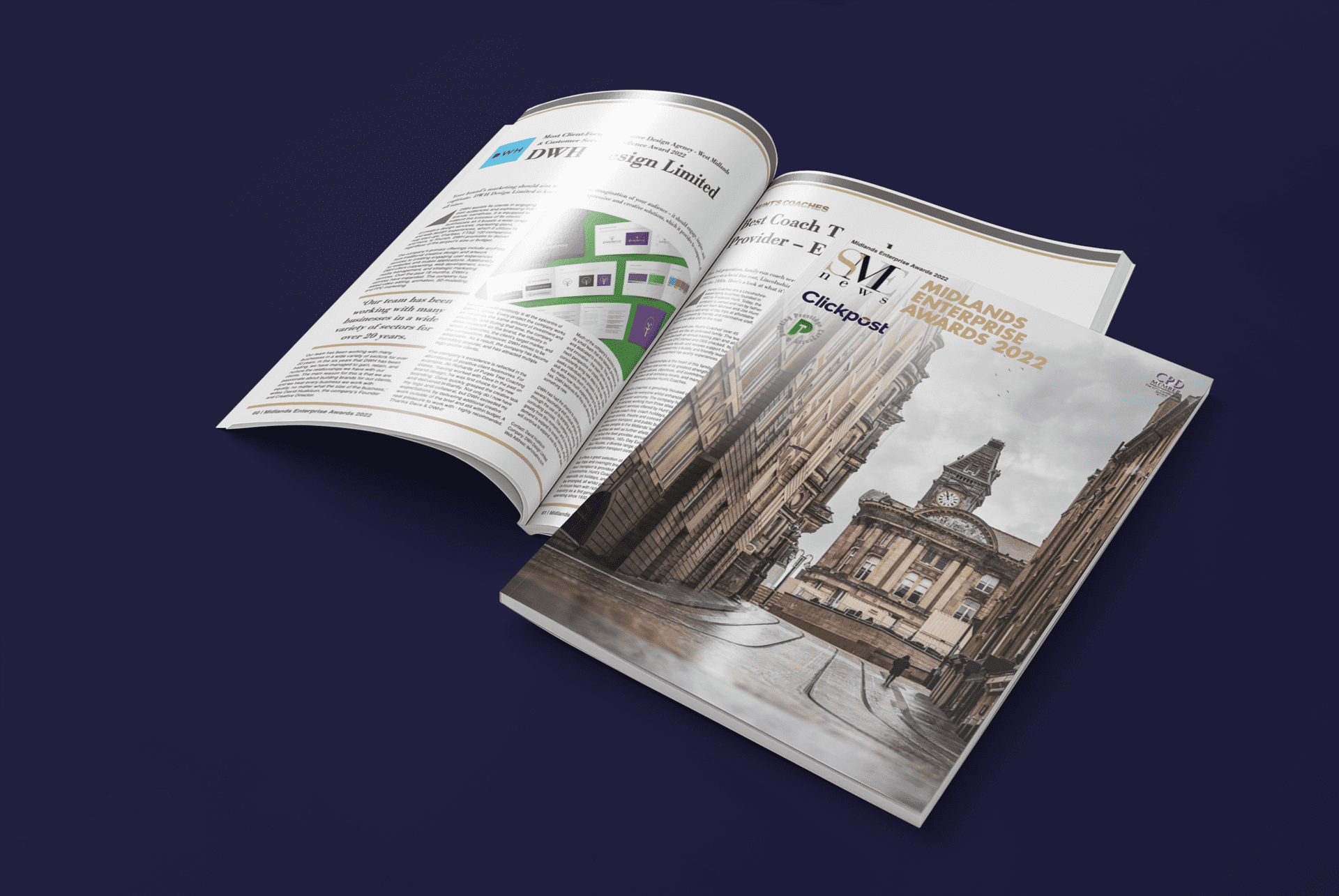
Covering sectors as diverse as cleaning, divorce support and traditional Japanese Cuisine, the Midlands Enterprise Awards 2022 celebrate the hard work of small businesses in the region, highlighting the industry leaders and encouraging local firms to strive for excellence.
The awards are judged by a dedicated panel, using methodical research and analysis to reward firms on merit rather than relying on votes. Entrants are shortlisted based on nominations and independent research by the awards team, and the final winners are judged on the standard of their products and their commitment to customer service.
We’re proud to have been named the Most Client-Focused Creative Design Agency – West Midlands, as well as scooping the Customer Service Excellence Award 2022. Our passion and dedication to our clients is key to everything we do at DWH, and we’re extremely grateful to have our efforts recognised by the SME Awards.
While it’s important to gain clients and work to retain them, putting in the effort to nurture a fulfilling long-term relationship is what sets us apart from others in the industry. Investing in a brand helps us to achieve great things for them, no matter how big or small the project.
You can read more about this year’s winners in the Midlands Enterprise Awards 2022 edition of SME News – or skip straight to DWH’s page.
Experience our award-winning customer service for yourself
If you’d like to work with an award-winning creative agency renowned for client focus and excellent customer service, get in touch with DWH and we’ll be more than happy to discuss your project with you.
DWH turns Six
It’s once again time to celebrate the birth of DWH. Six years after being founded, we continue to grow and cultivate a reputation for delivering exceptional customer service backed by creative innovation. All this adds up to strong brands, amazing results, and loads of happy clients.
It’s once again time to celebrate the birth of DWH. Six years after being founded, we continue to grow and cultivate a reputation for delivering exceptional customer service backed by creative innovation. All this adds up to strong brands, amazing results, and loads of happy clients.
Last year, we took a look back at the history of DWH and the people behind the scenes responsible for our success. Rather than rewriting the same article in different words, I’ll just point you in the direction of 2021’s birthday post, as the history of the business remains the same – and our incredible team members always deserve a shout-out.
This year, I’d like to focus on some of the highlights of the last 12 months, and how they’ve helped us to grow.
Expanding our service offering
With things starting to settle down after COVID-19, we were able to take the opportunity to expand our services, allowing us to deliver better value and an integrated approach to our clients’ branding and marketing needs.
This started with the expansion of our video and motion graphics services to include 2D animation and video editing. Animation has become a fast-growing essential for brands looking to succeed online, and offering this for our clients means that they can benefit from everything this exciting medium has to offer.
More recently, we’ve begun to roll out PPC as part of our expanded marketing service. We’ve helped both new and existing customers to find success in the SERPs and attract more customers, and we’re excited to get stuck into more campaigns.
Seeing lots of lovely faces
I’m going to mention the C-word again. Sorry. Coronavirus had the DWH team confined to home working, Zoom meetings and virtual coffee catch-ups while we tried to deliver a business-as-usual service. Over the last 12 months, it’s been great to get together in person again, as well as returning to face-to-face meetings and business pitches at our Coventry office.
Of course, as a young, modern business, we’ve continued to embrace flexible working, allowing the DWH team to work however best suits them. With some members working remotely and some clocking in at the office, we’re all happy, healthy and in an environment that allows us to thrive and do the best work we can for our clients.
Working on exciting brand roll-outs
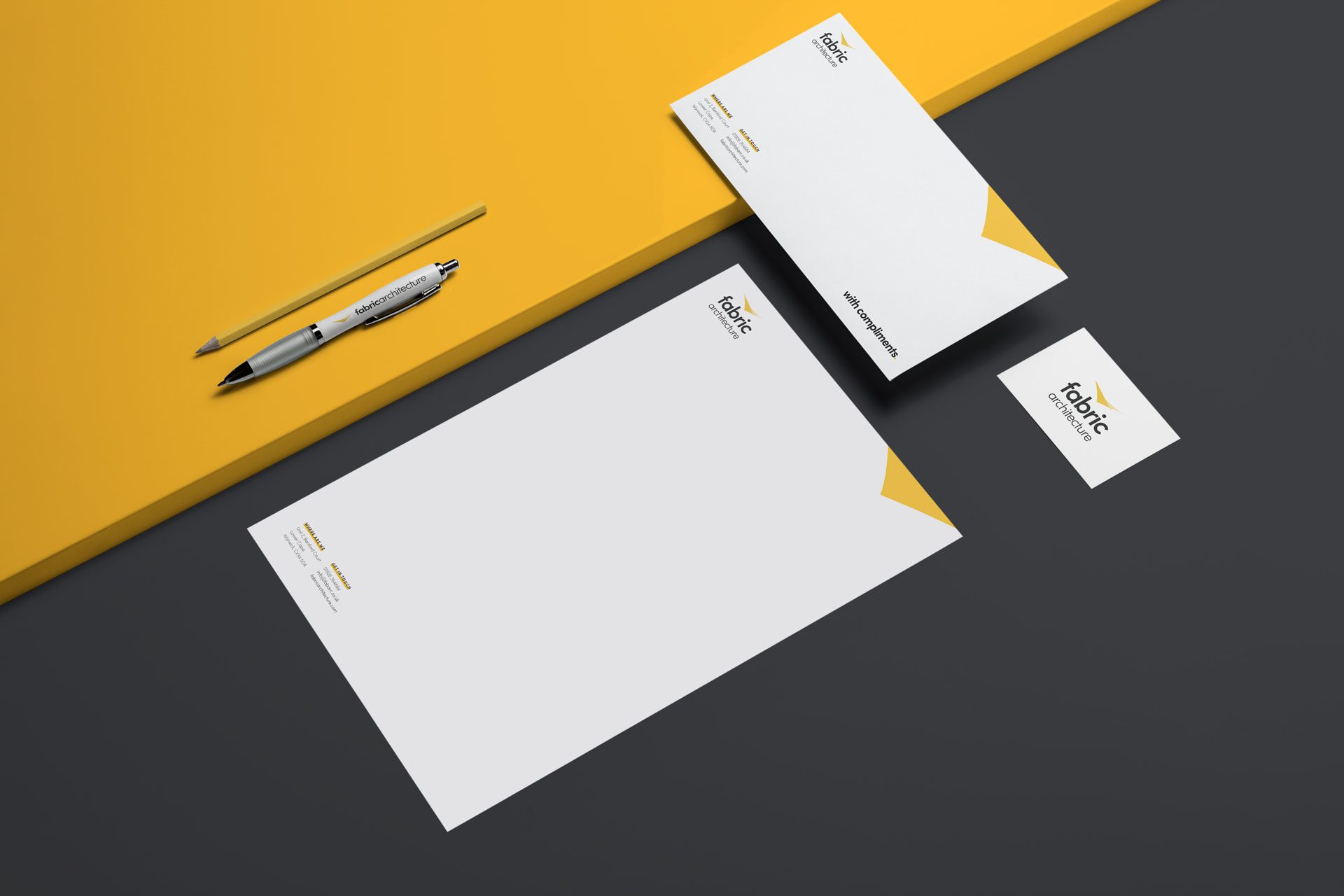
One of the most exciting things we worked on this year was a major new branding project for a Warwick-based architectural firm specialising in tensile fabric structures.
As well as designing a visual identity, we developed a complete brand strategy piece that incorporated messaging and brand proposition statements. This useful tool will help the client to ensure consistency across all touchpoints while focusing on the unique proposition of the brand and how it benefits their customers.
The brand rollout allowed us to show the depths of our small yet mighty creative agency, gathering together specialists from the DWH team to deliver amazing results that not only met but exceeded the client’s expectations.
Another exciting branding project was creating an exciting new identity for DWH, designed to better align with the DWH of 2021 and beyond. No matter how much you love your branding, there comes a time when it needs a spit and polish to make sure it represents who you are today. What better way to demonstrate the benefits to our clients than by doing it ourselves?
Winning a few more awards
We were also excited to add a few more awards to our growing collection:
- Agency of the Year
- Best Digital Brand Development Agency – Midlands
- Most Client-Focused Creative Design Agency – Midlands
- Customer Service Excellence Award 2022
It’s always amazing to be considered for an award – and even better to win them! Receiving industry accolades is a great reminder that the hard work we do at DWH pays off, and it helps to keep us motivated to do our very best for our clients.
The soppy bit
On behalf of Dave and the entire DWH team, I’d like to say thank you to everyone who has supported us over the last 6 years. After all, it’s the people around us who help us to grow and deliver new and exciting things year after year.
Whether we pitched to you and weren’t successful, helped you to launch an exciting new brand, or relied on you to support the daily operations of Casa DWH, you’ve helped us to learn, to grow, and to become better at what we do. Here’s to many more exciting things in the future!
And if you’d like your next project to be part of DWH’s ongoing history, we’d love to hear from you. If you’re quick, maybe you can snag some birthday cake!
SEO vs PPC: Should you choose a paid or organic search campaign?
As the complexities of the online marketplace continue to evolve, it’s crucial to choose the right digital marketing approach for your business. Search engines are a major driver of internet traffic, so it’s important to take a look at SEO and PPC, and how you can use them to build your business. In this article, we’ll explore both paid and organic search, giving you all the information you need to understand the differences between search engine optimisation (SEO) and pay per click (PPC), and which offers the most relevant benefits to your business.
As the complexities of the online marketplace continue to evolve, it’s crucial to choose the right digital marketing approach for your business. Search engines are a major driver of internet traffic, so it’s important to take a look at SEO and PPC, and how you can use them to build your business. In this article, we’ll explore both paid and organic search, giving you all the information you need to understand the differences between search engine optimisation (SEO) and pay per click (PPC), and which offers the most relevant benefits to your business.
What is SEO?
Search engine optimisation, or SEO, is an effective way to increase your organic website traffic that doesn’t involve paying for adverts. The idea is to enhance the visibility of your website to search engines, so it will appear closer to the top of the search rankings for relevant search terms. As a result, you should get more clicks and (hopefully) more sales.
If you’re pretty new to SEO, it’s a good idea to get a basic understanding of how the rankings work. Search engines use bits of tech known as crawlers, which view, record and index page after page after page on the web. The data they gather is then fed into complex algorithms created by highly paid boffins, and it’s these algorithms that decide the rankings.
An SEO-friendly website therefore needs to be created in a way that not only appeases search engines and their creepy crawlies, but also appeals to your human audience. Unfortunately, there’s no one-size-fits-all solution to this, and while those in the know have a solid understanding of the ranking factors used by Google and co, the exact algorithms are not only a well-kept secret, but are also constantly changing.
Here are just some of the ranking factors that search engines consider when serving results to users:
- Relevant content
- Website structure
- Links to and from your website
- Page load speed
- User engagement
- Bounce rate
- Frequency of updates
This is far from an exhaustive list, but it should give you an idea of what a successful SEO campaign entails. It’s worth bearing in mind that SEO doesn’t happen overnight, and you’ll need to be continually chipping away at it to keep up with those pesky algorithm changes.
What is PPC?
Pay per click advertising, or PPC, involves spending money to get users onto your website. Like SEO, PPC uses targeted search terms to get your website in front of more people. However, the key difference between the two is that PPC is a campaign of paid adverts, guaranteeing that your website will be served should certain criteria be met.
As the name suggests, you only pay for that advert if someone clicks on it. By bidding on certain keywords, optimising your budget spend and continually tweaking your ads, you can reduce the cost per click (CPC) of each campaign, resulting in a more efficient campaign that gets results.
We’ve all seen PPC advertising in action. When you search for something using Google, you’ll likely see a few results at the top and bottom of the page labelled “Ad”. That’s what you’re paying for in your PPC campaign. It’s easy to see how these would be effective, offering a convenient click and enticing blurb that promises to answer your query.
Other than the difference of paid versus organic marketing, PPC differs from SEO in one major way, and that’s that you can turn your paid campaigns on and off at will, giving near-instant results.

SEO vs PPC: How they stack up
Search engine optimisation and pay per click may feel like polar opposites, but they’re really two sides of the same coin, each with their own strengths and weaknesses.
Let’s take a look at some of the major points and see how they measure up.
Time
PPC will give you results in a very short time. Your site will instantly appear at the top of relevant searches, which should bring in more traffic. This is great if time isn’t on your side and you need to hit a sales target or advertise a limited offer.
You’ll be waiting much longer to see visible results from your SEO efforts. Developing optimised content takes time, with no ultimate guarantee that the changes you make will drastically impact your search rankings. SEO is an ongoing process that requires patience but yields long-lasting results that are worth the wait.
Ongoing cost
PPC is by its nature pay to play. Although you’ll experience an instant traffic increase once you activate your campaign, you need to be constantly pumping in budget to maintain this; stop paying and the clicks stop too. However, the fast nature of PPC means that you get feedback almost instantly, so you can test and tweak your campaigns quickly without throwing away too much money.
SEO costs a lot to set up but can be much cheaper to maintain. Once you achieve a good ranking, the traffic should continue to flow your way without too much input from your bank account. Unlike PPC, it can be a long time before you see the results of your efforts, which may mean wasting money on a low-performing piece of content with no way to recoup that loss after you find out it’s a flop.

Knowledge
SEO is somewhat of a dark art that calls for technical website tweaks, analysis of constantly shifting algorithms, and a whole load of research. Without the right knowledge and skill, you can easily do more harm than good, so it’s worth investing in the resources of an experienced SEO digital marketer.
In contrast, you can see great results from PPC with little more effort than the initial search for the most relevant search terms. Once you’ve added them to your campaign, you’re essentially just paying for the privilege of internet traffic. Of course, the best results come from careful optimisation of your budget spend, so an expert eye will help you get more bang for your buck.
Conversions
The average conversion rate of SEO across all sectors is 2.4%, while this is just 1.3% for PPC. Even when broken down by sector, SEO wins out every time. This is in part because users are more trusting of search engine results than they are of paid adverts. While anyone can throw together a PPC campaign for pretty much whatever they feel like, only hard work and a great reputation can help your website climb to the top of Google.
However, that isn’t to say that PPC isn’t worthwhile. There are many cases where this type of marketing is highly effective, particularly if you’re looking to target your audience at a certain stage of the sales funnel. You can also ensure exactly which page visitors will land on when they click your link, which should yield greater relevancy and more conversions.
SEO & PPC: Stronger together
SEO and PPC are two different approaches that each have their place in digital marketing. Although using one on its own can be effective, it’s a bit like going into a fight with one arm tied behind your back.
The very best digital marketers know how to effectively combine the two approaches, reaping the rewards of both and minimising those pesky downsides. Instead of choosing between the two, it’s better to look at it as a balancing act.
Here are just a few of the considerations that may help you to find the right focus for your SEO and PPC campaigns:
- What industry are you in?
- What is your budget?
- Do you require sales leads right now?
- Who is your target audience?
- How much authority does your brand already command?
- Where do your competitors rank?
- Do your competitors use PPC?
Ultimately, SEO and PPC work best together, creating a holistic approach to your digital marketing that should provide great results both in the short and long term.
Your SEO & PPC experts
If you’d like more advice on SEO and PPC, or you’d like to put your campaigns in the hands of dedicated experts, contact DWH today. Whether you’re a digital marketing expert or a complete novice, the team is on hand to support you as much or as little as you need.
Why animation is essential to modern brands
There are many elements that make up a successful brand. Whether developing a clearly defined mission statement or an exceptional logo, digital marketers need to be acutely aware of modern trends, technologies, and what will appeal to our target audiences.
There are many elements that make up a successful brand. Whether developing a clearly defined mission statement or an exceptional logo, digital marketers need to be acutely aware of modern trends, technologies, and what will appeal to our target audiences.
Digital media is rapidly moving in the direction of video and animation, and away from more traditional resources such as text and static imagery. With their abundance of advantages, it isn’t hard to see why. A simplified exchange of information, enhanced storytelling and increased engagement are powerful incentives for brands to move towards this increasingly popular medium.
Using animation to tell your brand story
Storytelling is arguably the most powerful weapon in your branding arsenal. It enables you to build a rapport, and gets people invested in products and ideals. Giving your brand a relatable story can build trust with your audience, helping them to form an emotional connection that develops into brand loyalty.
But storytelling in branding is nothing new, so where does animation come in? The ability to show movement, multiple images and even complete scenes makes it easier to show your brand story in an instantaneous way that text and static images simply can’t convey.
Let’s look at this in more detail.
Animation vs text and static images
Stories are easier to tell through video media than through other methods. A short, animated video can stir powerful emotions and convey complex messages that transcend language barriers.
Copywriting, while a powerfully creative medium in its own right (Of course I would say that), can struggle to grab the attention of the casual scroller. In contrast, static imagery might draw focus but struggle to convey a complex message.
Animation vs live-action video
Of course, these arguments also open the door to live-action media. Although capable of being a strong format for a digital marketer, animation offers limitless possibilities that aren’t bound by the physical capabilities of videographers and human actors. Your stories can live in an infinite dimension limited only by your own imagination.
In addition, live-action video is only applicable in certain scenarios, and can be extremely costly. Animation can be used to create dynamic logos and interesting, concise visuals, with an affordability that lends itself to more casual use.
See the masters of storytelling through animation
Done effectively, storytelling through animation can be used effectively over a range of mediums.
Charity Water Aid recently launched a TV ad campaign that showcases the power of animation. Moving away from the powerful but potentially oversaturated imagery of water-stricken communities that define the brand, the ad tells the story of a small girl who wishes to provide her community with water and goes to great, otherworldly lengths to achieve her goals.
This ad is eye-catching, empowering and emotional, superbly demonstrating the plight of these unfortunate communities in a completely new and unique way.

How animation solves the attention-span problem
In an age where audiences are bombarded with ads and attention is an increasingly precious commodity, a rapid but effective exchange of information is essential. We have mere seconds – or even milliseconds – to make that initial connection. Our offering must be bold to capture that attention, and it must quickly prove its value to retain it.
Conveying information through text or static imagery is likely to be far more mentally taxing for the viewer than video or animation. Naturally, this means that these formats will struggle to retain their focus.
Let’s take the example of an animated logo. Having a static logo can undoubtedly be effective if done well, but adding animation opens so many other doors that were previously inaccessible.
For example, this piece from Google succeeds in rolling a selection of their iconic, erm, icons, into one neat package. This ensures maximum brand impact, as these separate elements become instantly connected, forming strong associations between the brand’s various offerings.
Alternatively, this piece from WWF brings their famous panda logo to life. This instantly makes the image more powerful, showing movement and vitality that emphasises the living animals at the heart of the cause. The panda isn’t just a symbol of their work, it is their work.
Incorporate animation into your branding today
With video and animation gaining increasing momentum as a format of choice over a wide variety of mediums, there’s no better time to start integrating it into your branding toolkit.
DWH can help you begin to expand your branding library, helping you to harness this valuable digital marketing resource.
Contact us today and we’ll be happy to talk to you about any of your branding needs.
How do I make my website more sustainable?
If you’re concerned about the environment and living as sustainably as possible, you’re likely considering transportation, manufacturing and agriculture as some of the main culprits for CO2 emissions. However, you might not realise that the unassuming internet is also a substantial producer of carbon emissions.
If you’re concerned about the environment and living as sustainably as possible, you’re likely considering transportation, manufacturing and agriculture as some of the main culprits for CO2 emissions. However, you might not realise that the unassuming internet is also a substantial producer of carbon emissions.
The internet currently produces 3.8% of all global carbon emissions. While that might not sound like a lot, if the internet were a country, it would be the sixth largest global polluter. Frankly, that’s huge.
With 1.17 billion websites in the world, there’s little chance of a simple fix, and no fundamental change that will solve all our problems. Instead, it’s down to each of us to ensure that our own web development is sustainable and planet friendly. Much like the climate problem at large, we all have to pitch in to make these changes work.
How can a website be unsustainable?
It’s hard for the average person to perceive why this is a problem. For years, the world has been pushing the narrative of “going paperless” to save the planet. Physical paper and other such tangible products are clearly a use of physical resources. Using less paper means fewer trees are cut down. Simple.
But what about the internet? It’s just data. Intangible tech wizardry that we can’t see, smell or touch. The answer is energy, and lots of it.
Let’s get straight to the point. Websites are not standalone digital bubbles where the polluting state of the real world doesn’t apply. Each website has a carbon footprint, driven by the resources needed to keep those bits of data active and accessible to the world.

Putting a website’s carbon footprint into perspective
Let’s take a look at some carbon emission statistics.
A simple, no-frills web page will emit around 20 milligrams of carbon dioxide per second when viewed on a desktop computer. For a page filled with detailed images, eye-catching animations and informative marketing videos (as many are with the current trends in digital marketing), this figure can easily rise to 0.3 grams per second.
For comparison, a small petrol car produces around 1.34 grams of CO2 per second. This means that the petrol-guzzling car you feel guilty driving around is only around 4.5 times more polluting than the webpage you’re reading this on. When it’s put into perspective like that, it’s crazy that we’re not freaking out about the environmental impact of the internet more.

How can we make our websites more sustainable?
Hosting companies need to do their part, of course. Huge data servers don’t come cheap, and they eat up enormous amounts of energy. Fortunately, our increasingly eco-conscious world has encouraged these businesses to adopt greener practices.
This might include switching to renewable energy sources or utilising a content delivery network (CDN) to load a website based on a user’s geographical location. Web designers can do their part here by always choosing a website host that adopts these more ethical practices. However, as we’ve seen, the actual designs of our websites also have a big impact.
With this in mind, let’s look at some ways of making your website more sustainable, helping to save the planet one mouse-click at a time.
Have sustainability ingrained in your business
Building sustainable practices into the very core of your business is a fantastic start, and helps to ensure that you don’t stray too far in the other direction when new, exciting projects and opportunities arise.
Not only does this direct the development of your business, it will also help you to appeal to customers based on their like-minded ethics.
Optimise images and videos
Our websites still need to pack that digital marketing punch to attract and retain an audience. This is, of course, non-negotiable, but how this punch is achieved is very much up for discussion. The big-hitters in this arena are visual media such as images and videos.
The simple act of removing auto-play video functionality could have a sizable impact on your website’s carbon footprint, along with applying more careful consideration to image selection. Large, detailed images take a lot more resources to view. Wherever possible, try replacing them with smaller image files or vector graphics.
Carefully consider your font selection
Perhaps surprisingly, custom fonts can impact your website’s carbon footprint in a big way. Selecting a non-standard font means adding them to a viewer’s device before your carefully crafted web experience can take full effect. This additional data transfer inevitably means a bigger environmental impact.
Are you able to maintain your website’s branding and style using the standard range of font selections? If so, you’re well on the way to making a more sustainable website.
Create green templates for future projects
Saving you time and money as well as giving you that warm, fuzzy feeling when doing your bit for the planet, creating ‘boilerplate’ green webpage templates is a great way to ensure your site’s continued sustainability.
Rather than reinventing the wheel when a new project or opportunity comes into view, you can start from pre-optimised page designs. This means less energy and resources spent creating pages from scratch, and an assurance that the final design is in line with eco-friendly best practices.
Sustainability at DWH
At DWH, we’ve made it part of our mission to be at the forefront of developing more sustainable web experiences for our clients. As such, our servers are compliant with ISO 14001:2015 and ISO 50001:2011 certification, and we’re in the process of moving existing websites over to greener data centres.
We’re also working with our development partners to deliver a greener, more sustainable internet experience to minimise the amount of carbon emissions generated by the websites we build. We aim to offset these emissions through our partnership with Ecologi.
If you’re concerned about the environmental impact of your business, contact DWH today and we’ll start you on the path to sustainable website practices.
DWH named Best Digital Brand Development Agency - Midlands
DWH is proud to have been named Best Digital Brand Development Agency - Midlands in Corporate Vision’s MarTech Awards 2022.
DWH is proud to have been named Best Digital Brand Development Agency - Midlands in Corporate Vision’s MarTech Awards 2022.
The MarTech Awards
In recent years, particularly since the pandemic shifted remote working to the forefront of most industries, technology has become an increasingly important part of digital marketing. A need has therefore arisen to help brands in their search for reliable, innovative marketers to support their business growth efforts.
As part of their mission to support and guide better business practices, Corporate Vision created the MarTech Awards in 2020 as a way to recognise and reward the world’s most committed and cutting-edge marketers. These global awards cover a broad range of specialisms, from advertising tech and SEO to emerging sectors like influencer marketing, assessing and acknowledging leaders in this continually evolving sector.
Why DWH?
Corporate Vision chose DWH as the Best Digital Brand Development Agency for the Midlands region in part because of our agile nature and keen adaptability.
The shift to online communications since the pandemic has also meant adapting how we support our clients. What makes us stand out is our adaptability and resilience. While our passion and creativity are what attracts customers to us, our attention to detail, knowledge, and amazing team is what keeps them coming back.
Over recent years, we’ve seen a shift towards video, motion graphics and animation, and chose to expand our service offering in this area to better cater to our clients’ needs. With a small yet highly skilled team, we’re able to take on a variety of challenges while ensuring that clients know exactly who is working on their branding and marketing project.
We’re always on the lookout for opportunities to expand and upskill the DWH team to meet our clients’ needs, and look forward to seeing what exciting challenges await us in the future.
Work with an award-winning brand development agency
If you’d like to benefit from our expertise in innovative brand development and digital marketing, we’d love to hear from you! Get in touch today and let’s discuss how we can support your brand.
The impact of data privacy on digital marketing in the post-pandemic world
The increased digitisation of almost every element of our lives is a legacy of the COVID pandemic, and with that comes a huge increase in shared personal data.
Whether you’re verging on computer illiteracy or at the cutting edge of digital tech, your personal data will be out there somewhere. Analysing and selling this data is profitable, and, as we’ve increasingly seen over the last few years, data hacks and breaches are a worryingly common event.
However, as consumers begin to better understand exactly how much of their data is out there, and why this might not be ideal, data protection has fast become a priority in the digital world. Let’s take a look at some of the emerging battlefields when it comes to protecting personal data and how digital marketing needs to adapt to support them.
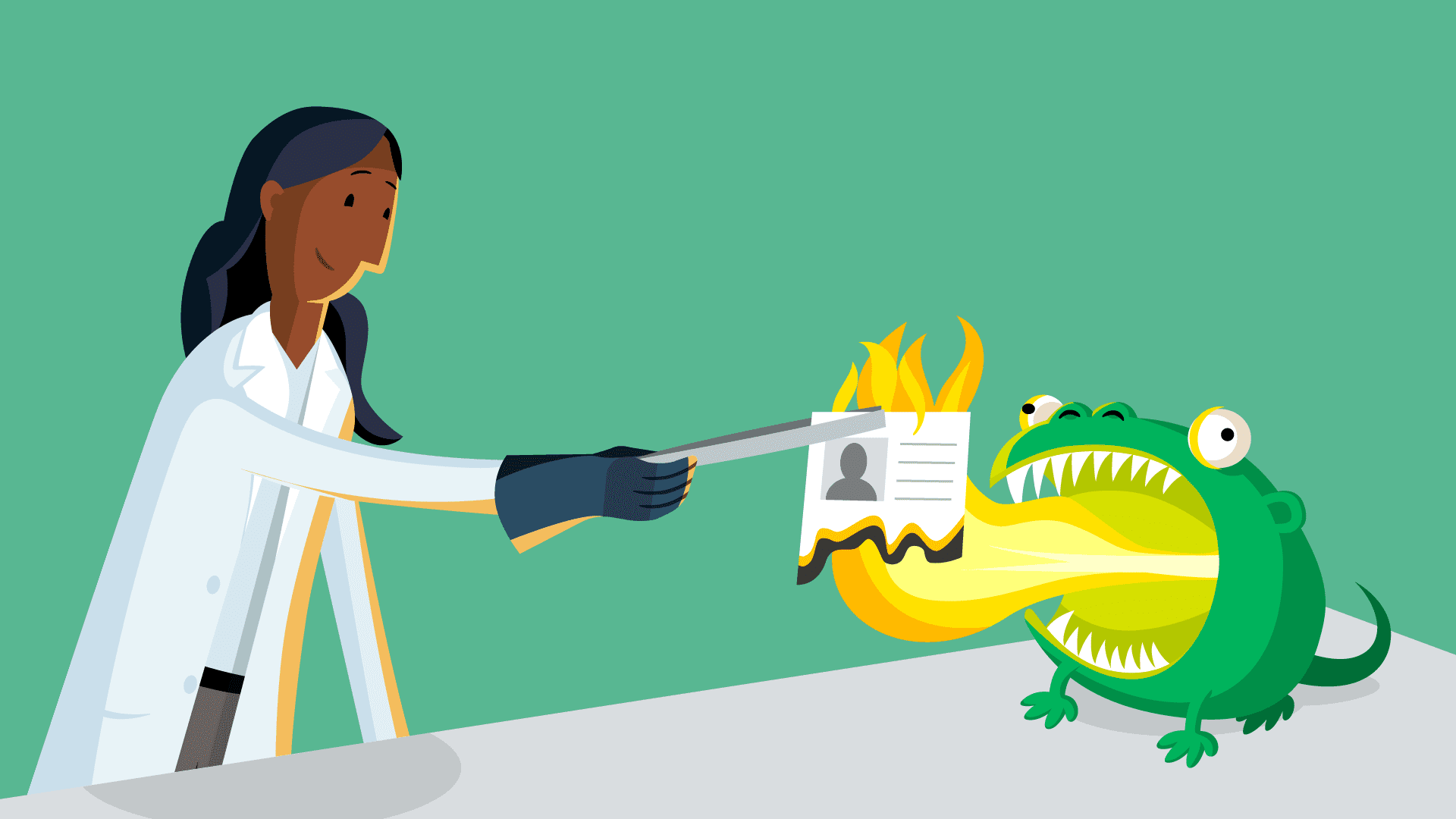
Issue: Users don’t want to be tracked by search engines
Those concerned about exactly how much of their data Google is tracking (spoiler alert: it’s loads) might look to alternative search engines that take a more ethical approach. The stand-out champion of ethical data handling, and a model for businesses everywhere, is DuckDuckGo.
They make a simple and elegant promise. Your personal data will never be stored, and you will never, ever be tracked around the internet.
Like all search engines, they make their money from paid ads, but DuckDuckGo pride themselves on only showing ads that are relevant to a user’s current search. No previous history, and no creepy ads giving unwelcome chase. It’s little wonder users are flocking (sorry, couldn’t help myself) to them.
Herein lies a problem for digital marketers. With little underlying data to work on it can be very difficult to ensure that our target audience sees our content or ads.
Solution: Focus on quality content
By not being able to target content or ads to a certain demographic, untracked search engines like DuckDuckGo present the challenge of creating high-quality content with top-tier SEO. For adverts, marketers need to craft copy with broader appeal to capture the attention of more than a very narrow demographic.
While this might be a struggle, it gives marketers the chance to stretch their creative muscles and try something new, instead of just cheekily bidding on competitors’ branded keywords.
Issue: Users are distrusting of targeted ads
A large part of the monetisation of personal data comes in the form of personalised ads. We’ve all had that jarring experience of searching for a product and then seeing ads for it for the next six months.
To restrict the reach of targeted marketing and any associated nefarious schemes, users are choosing to use ad blockers, make stricter choices when accepting cookies, and even using a VPN to mask their location. However, this data is essential for marketers, who need to come up with new ways to encourage users to hand over this important information.
Solution: Encourage users to share their data
Gener8 Ads is a British start-up that has taken this idea and run with it, giving users full control over their (anonymised) data while also offering an incentive that doesn’t alienate marketers. By simply installing a free browser, Gener8 users have the option to enter ‘privacy mode’, which stops companies from tracking them at all, or ‘rewards mode’, which allows them to earn points from any ad they see and redeem them for products, vouchers or charity donations. It’s a stroke of genius, and they’ve already got dragons on board.
This is a great example of how we can support users’ desire to better control their online privacy, while also making the lives of digital marketers easier. By weighing up the perceived value of their data versus the reward gained by sharing it, marketers can leverage downloadable guides, rewards programmes, discount codes and more to obtain useful data while giving users something beneficial in exchange. Win win.

Issue: Users are suspicious of unsolicited emails
Email use is practically universal for those of us with any online presence. We rely on it for a huge percentage of our general correspondence, especially with the prevalence of online shopping. Email is the go-to medium for the world at large to contact us, meaning inboxes full of spam are commonplace.
Unfortunately, the ease with which emails can be sent to vast numbers of people makes it an extremely useful tool for those with nefarious intentions, and messages containing phishing scams and viruses have become an almost unavoidable experience for email users.
Over the years, email accounts also gather an extraordinary amount of data. If that account were to get into the wrong hands, no end of problems could ensue. All of this is starting to make consumers a little distrusting of anything that drops in their inbox.
Yet again, innovative businesses are beginning to fight back and return data control to the user. Email providers now tend to offer a vast array of helpful measures, including ad-blocking, spam filters, tracker blocking, encryption, multi-layered login and loads more tools to help keep confidential correspondence confidential.
Solution: Step back, and look at the bigger picture
As marketers, we must be respectful of our audience’s choices in data sharing. While we may receive less hard data on the success of our email campaigns, it doesn’t mean we should simply give up and stop sending them.
Consider switching to integrated brand metrics, focusing less on the minute detail of campaign performance, and more on the larger pictures such as ROI and overall ad spend. By creating more targeted email campaigns, such as for a specific product or service, your website analytics, sales and enquiries should give you at least some insight into the performance of your email marketing efforts.
Digital marketing & data privacy
The future holds massive changes for the landscape of digital marketing, and they’re already well underway. The pandemic taught us to adapt our business strategies to survive, and we must continue to do so as the COVID legacy persists.
If you’re struggling to keep pace with the changes to digital marketing then DWH can help. Contact us today to discuss all of your branding and marketing needs.

